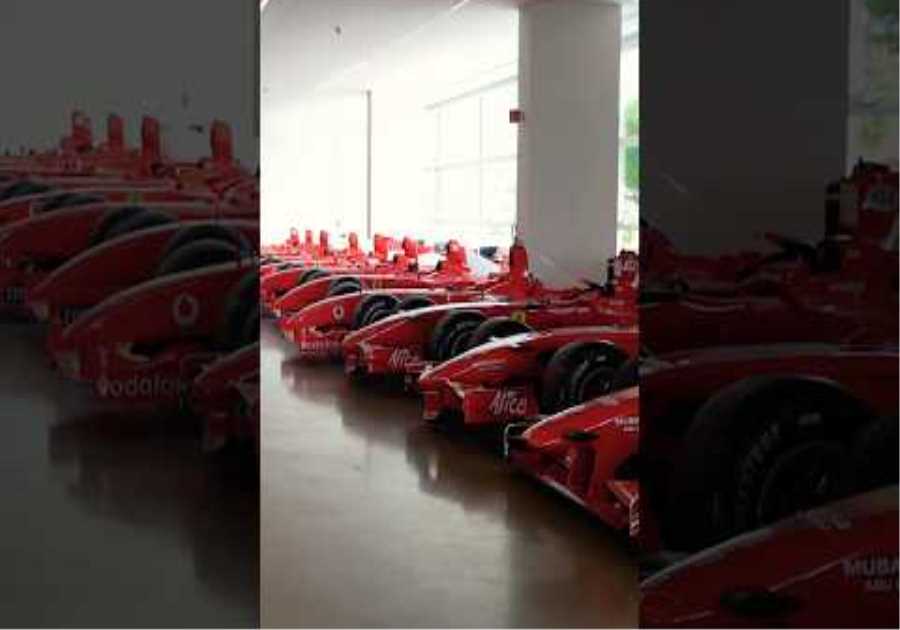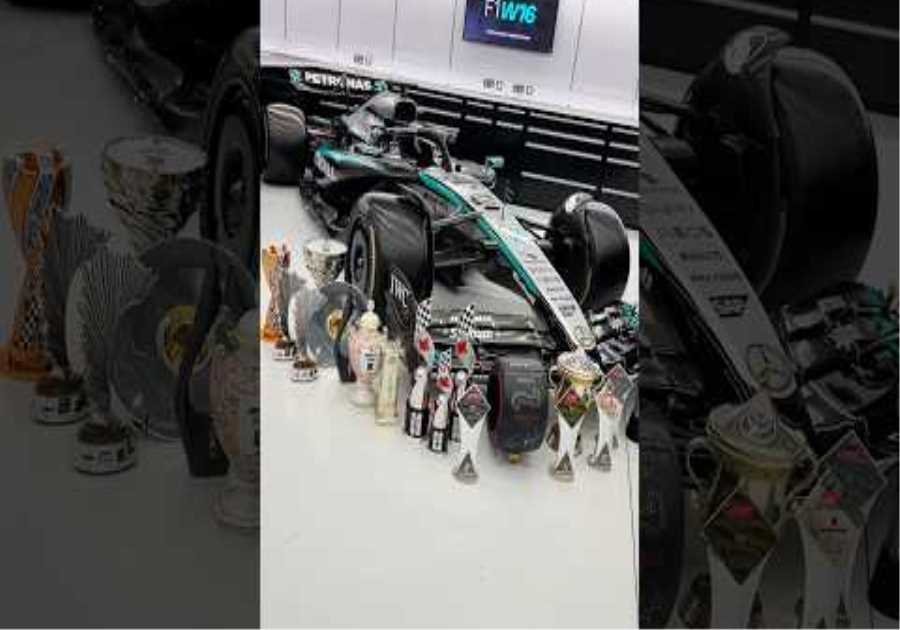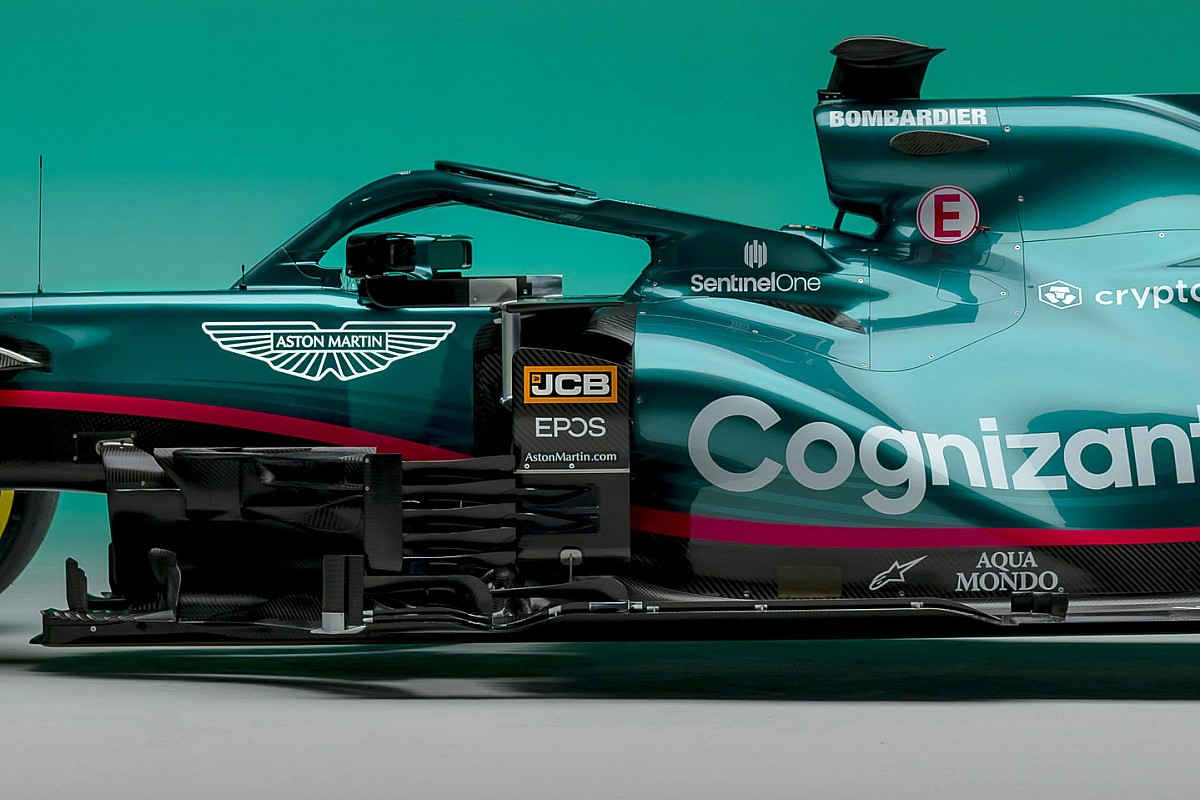
While the paint job didn’t disappoint, the car design itself also offered some intriguing enhancements as the Silverstone-based team continued developing their race-winning RP20.
And unlike the previous car launches, Aston Martin left little to the imagination and released detailed footage of the entire car.
The first thing to note is that the team spent both development tokens on redesigning the chassis to unlock aerodynamic performance in the central part of the vehicle.
This is in part a legacy of the 2020 team approach, which took on the entire design package of the Mercedes that won the championship last year, including a more conventional position for the Side Impact Bar (SIPS).
Mercdes AMG F1 W10 side impact protection bar
Photo by: Giorgio Piola
The low arrangement introduced by Ferrari in 2017 is now viewed as critical from an aerodynamic point of view, as the inlet of the side pod is positioned similar to a periscope.
This is typically over the fairing that surrounds the SIPS. This is used to inhibit the turbulence created by the front tire and therefore also supports the transport of cool air, which is supplied to the coolers inside the side pods.
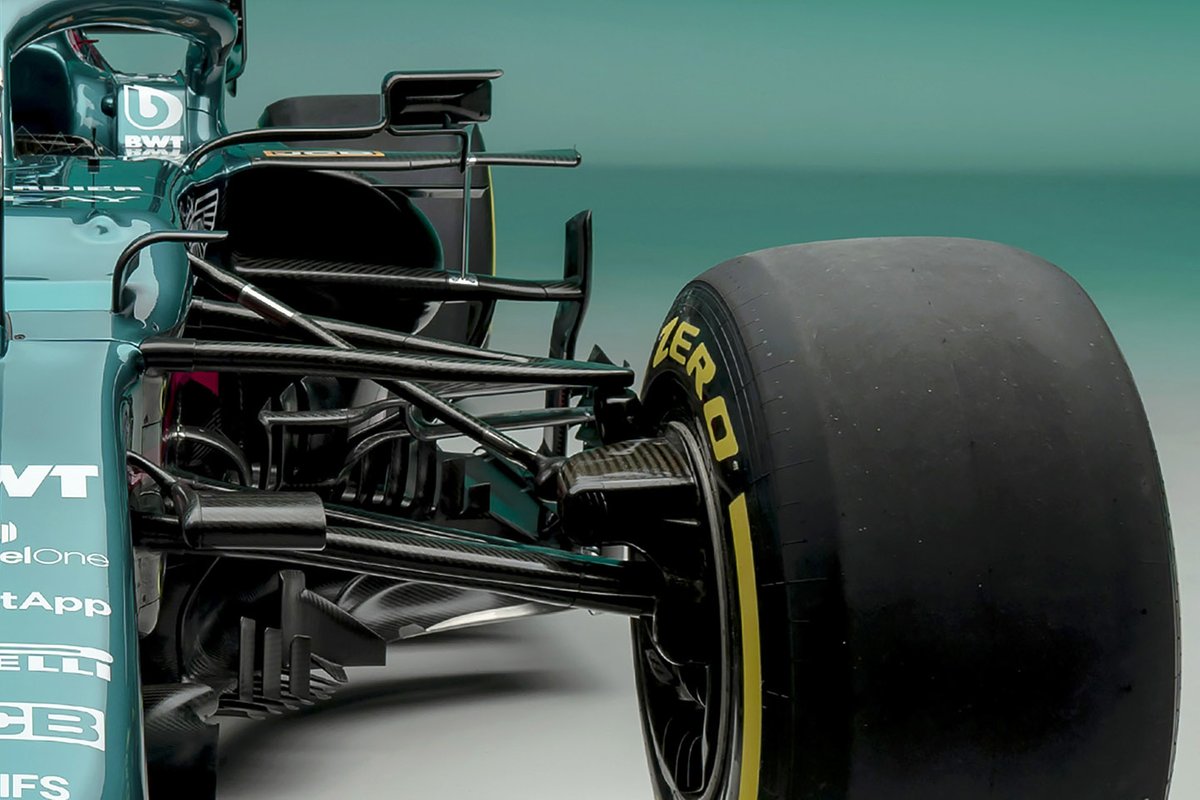
Aston Martin AMR21 detail
Photo by: Aston Martin Racing
This image (above) shows how the bargeboards are used to filter the turbulence caused by the front tire and turn it into something more usable. Meanwhile, the airflow supplied from the front of the vehicle including the cape is forced around the underside of the side pod, while the fairing around the SIPS shields the airflow entering the side pod inlet.
This should result in a much cleaner flow arriving at the radiators, with the air not being worked too hard on numerous surfaces along the way.
The inlet itself is extremely narrow and the team can recreate part of it through the sculpture on the sides of the chassis. The narrowness of the inlet also draws your attention to the substantial fin that grows out of the shoulder of the sidepod and helps divert airflow downward over the redesigned sidepod packaging.
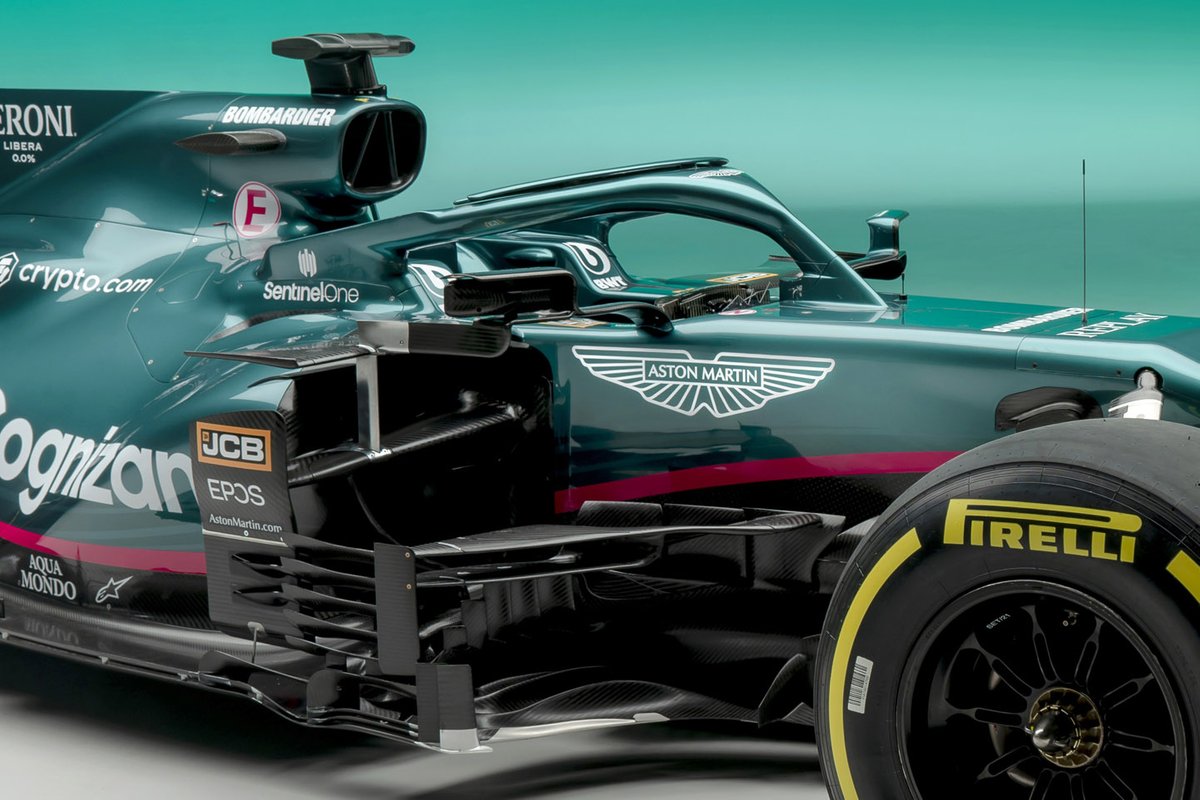
Aston Martin AMR21 detail
Photo by: Aston Martin Racing
This is an area where the team has clearly focused its resources and knows that the right implementation will bring aerodynamic benefits to other areas of the car.
The sidepod design was inspired by the new bodywork the team installed in Mugello last season (see below), but has not made the complete transition from ramp to floor and instead prefers the submerged belly as we see it on seen elsewhere.

Racing Point RP20 new sidepods detail
Photo by: Giorgio Piola
The rear of the side pods and the engine cover are packed extremely tight. The AMR21 is similar to the W12, with the body almost shrinking and wrapped on the components inside.
And similar to the W12, it also features a body bladder around the intake plenum, a feature of the unit that is believed to be larger this season due to some of the performance and durability updates introduced by HPP.
The AMR12 also has a very small rear cooling outlet that shows not only how efficient the Mercedes-AMG F1 M12 E Performance engine is supposed to be, but also how much it has focused on producing a car that can get through the introduction of lost downforce resumes the new regulations.
The extremely tight packaging also creates a significant undercut under the cooling outlet, which is buying back some of the flooring that has been lost to the new regulations and driving the performance of the coke bottle area home.
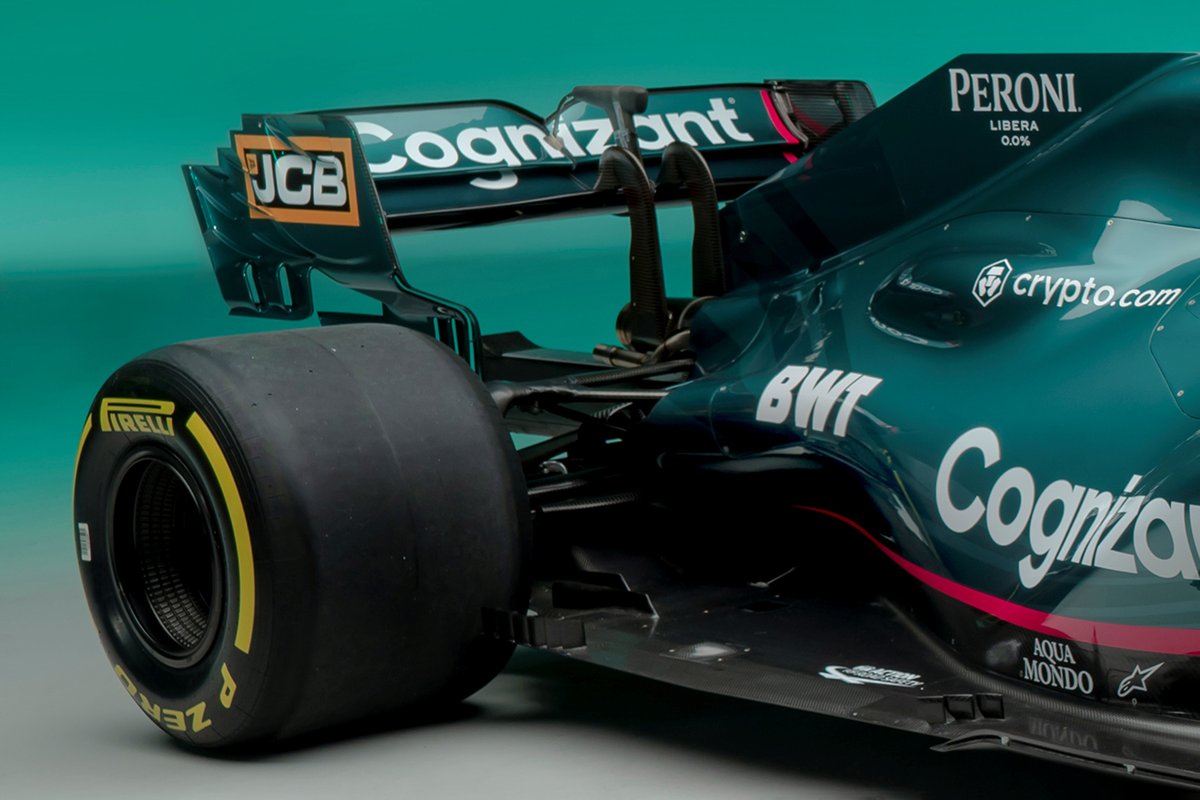
Aston Martin AMR21 rear end detail
Photo by: Aston Martin Racing
This is further supported by the token-free introduction of the Mercedes gearbox mount and the rear suspension from last season, of which Mercedes was particularly proud due to the associated aerodynamic advantages.
The new arrangement lifts the suspension elements off the diffuser ceiling, which has become more important as teams push the boundaries of regulations, while the rear leg of the lower wishbone positioned so far back also causes more to be pulled out can power from the diffuser.
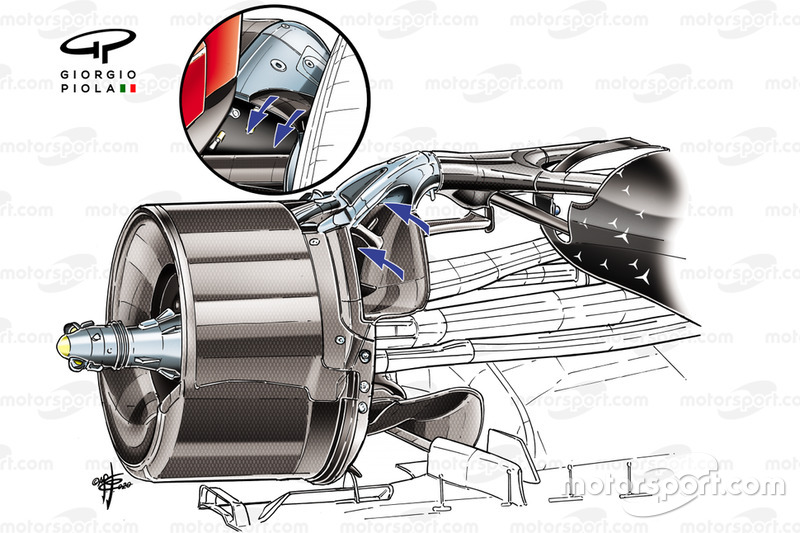
Mercedes AMG F1 W11 rear brake duct detail
Photo by: Giorgio Piola
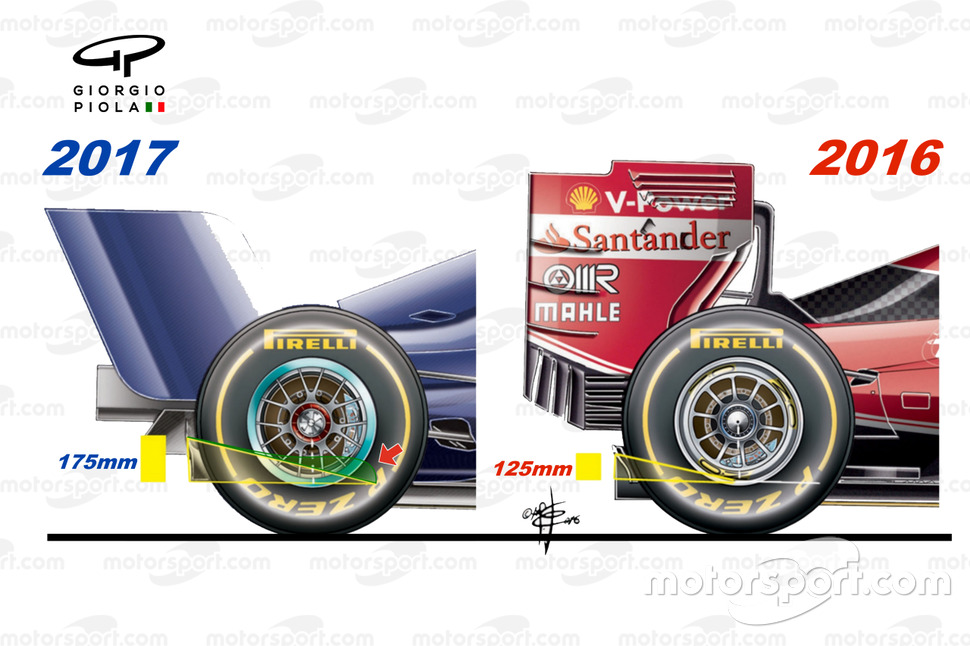
Diffuser rules
Photo by: Giorgio Piola
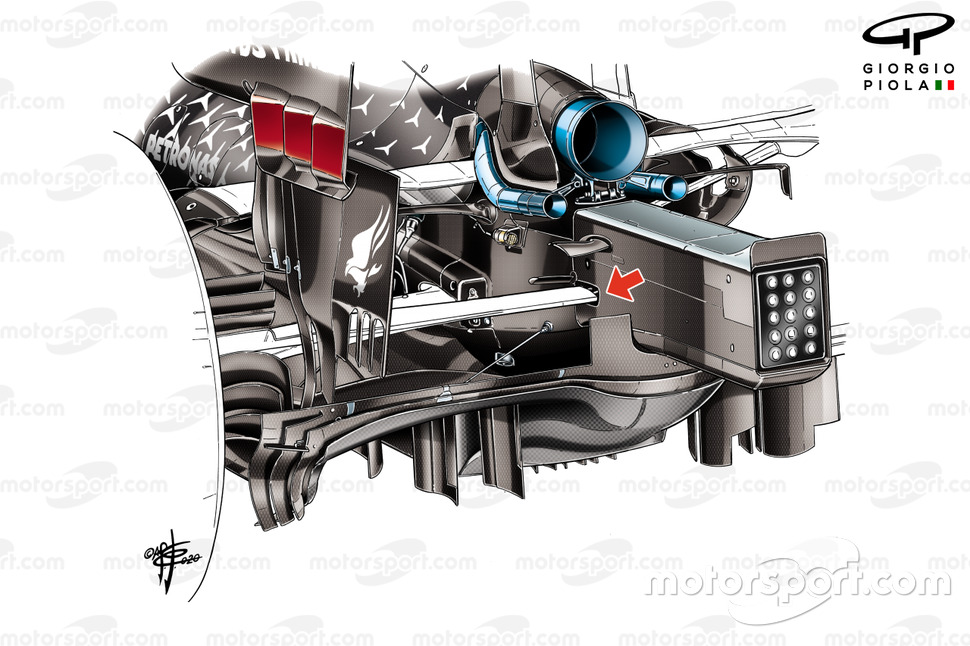
Mercedes AMG F1 W11 rear suspension
Photo by: Giorgio Piola
Aston Martin is the first team to debunk all of the aerodynamic tricks used to make up for the difference at the edge of the diagonal floor cutout.
The first of these tricks is similar to the design shown by AlphaTauri, where three outward-facing slats are installed just behind the point where the floor begins to taper.
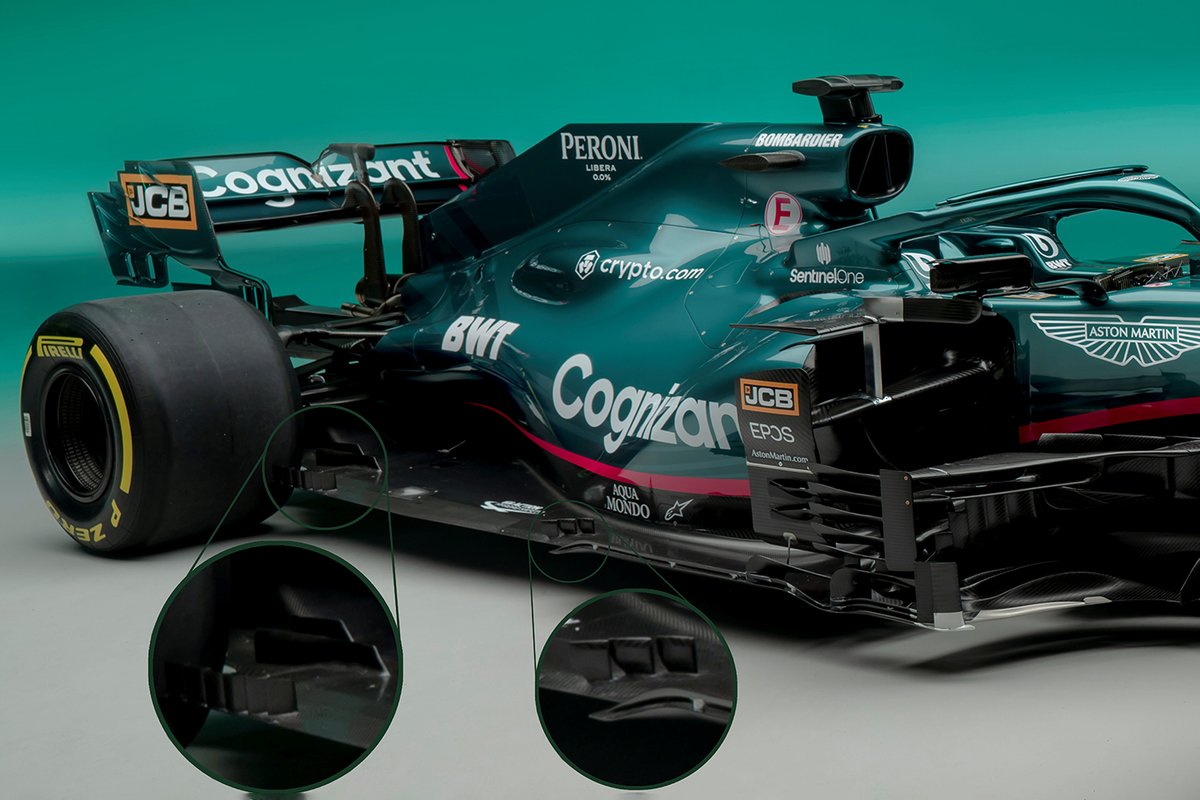
Aston Martin AMR21 floor detail
Photo by: Aston Martin Racing
The airflow structures emanating from these ribs no doubt interact with the AlphaTauri-like floor roll and floor notch right in front of them, helping to mitigate some of the losses caused by the ban on completely closed holes and the reduced floor width in front of them Rear tire.
Here we find a solution similar to that tested by Ferrari at the end of 2020, as a series of fins form an arch. This should help affect the airflow in front of the rear tire and reduce the effects of the tire splashing on the diffuser.
Interestingly enough, two staggered strips of flooring have also been added, with teams usually opting for just one beam, with Mercedes being a proponent of such designs in the pre-hybrid era.
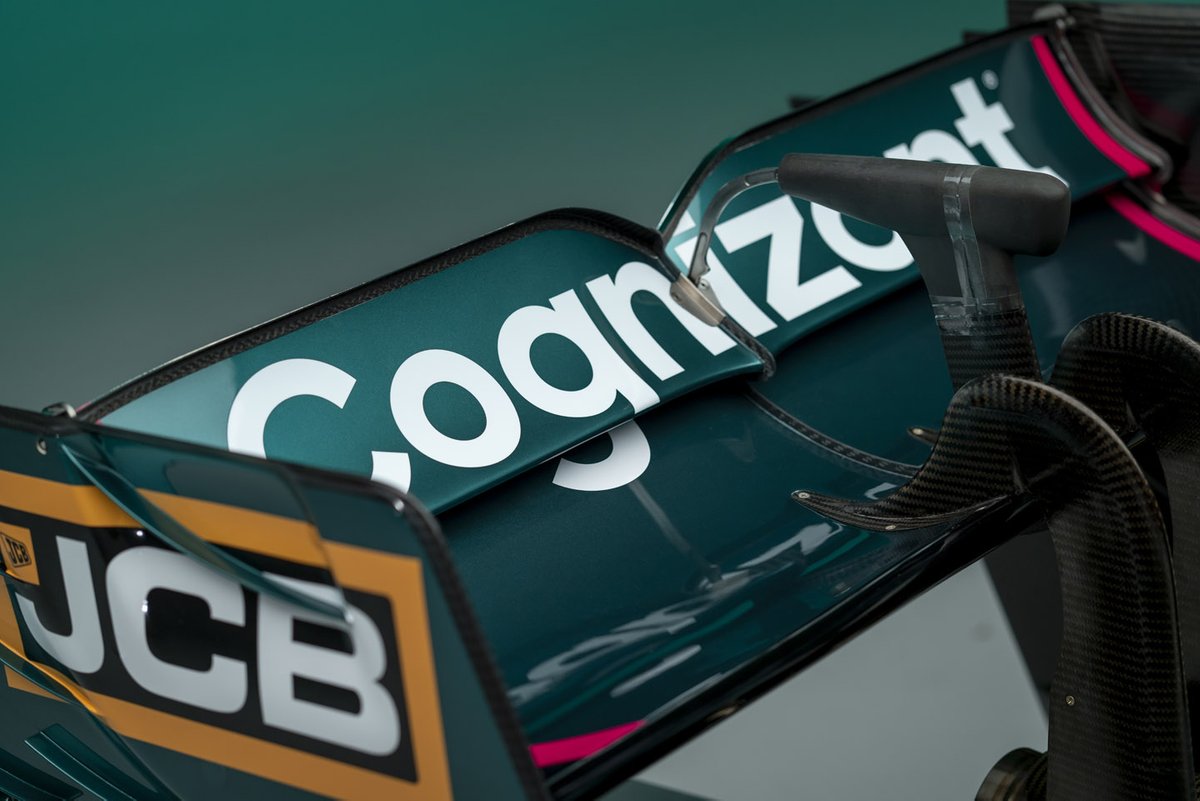
Aston Martin AMR21 detail
Photo by: Aston Martin Racing
A new solution also appears on the rear wing as the thickness of the top front corner of the endplate has been changed to allow for another upward flap. The teams had already started looking for ways to redesign this region last year. The removal of the louvers in 2019 led to an increase in air resistance.
The wash-up flap is positioned so that it can affect the apical vortex created by the connection between the upper flap and endplate, and is undoubtedly a design aspect that the rest of the field will take note of.
An outstanding omission …
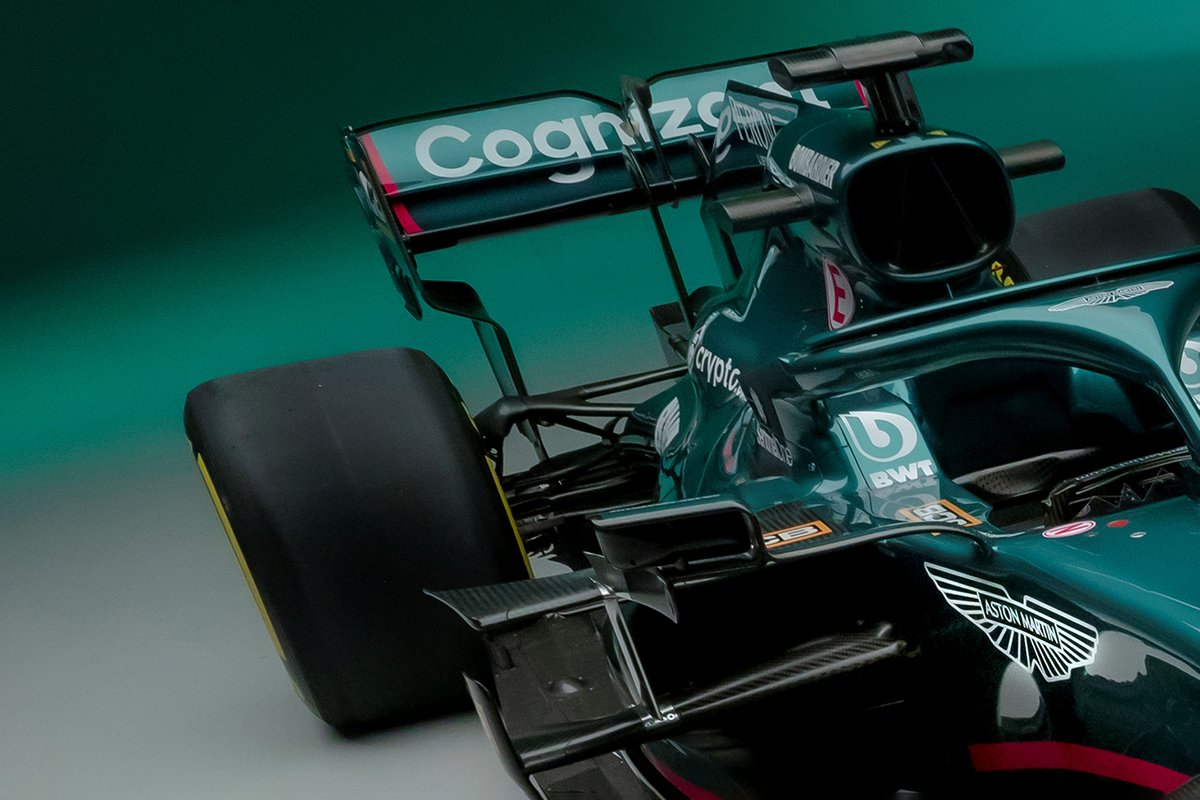
Aston Martin AMR21 rear suspension and brakes detail
Photo by: Aston Martin Racing
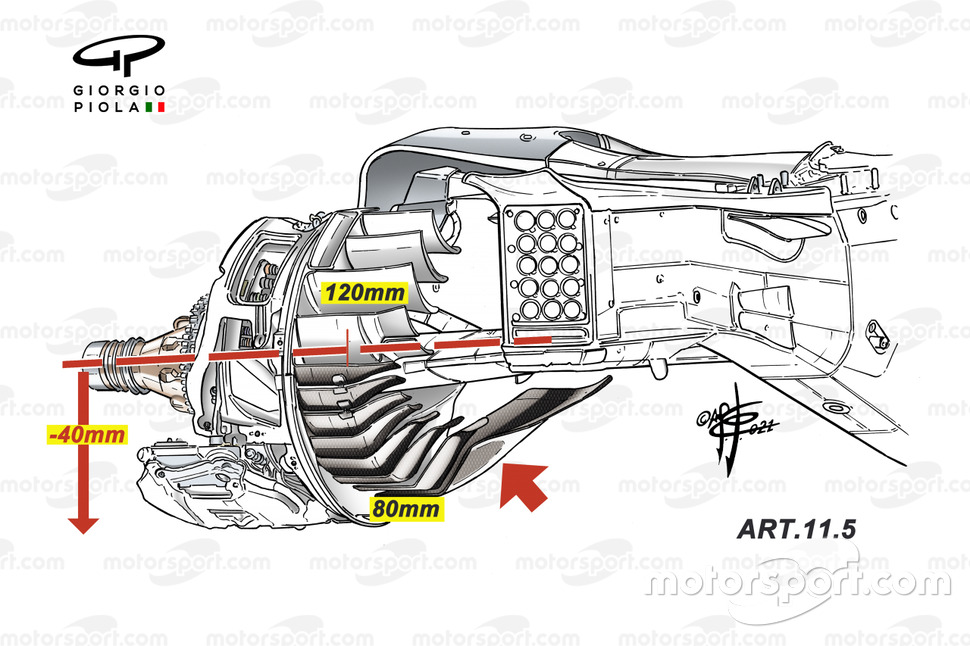
2021 brake fins rule
Photo by: Giorgio Piola
While Aston Martin showed us a lot of his new car, he kept one element secret for now – the rear brake lines (not pictured above).
It seems like an odd omission as it showed us so much about the rest of the car, but we have to remember that this is one aspect of the 2021 cars that will be affected by the new regulations.
Perhaps the team feels they have found a little pocket of performance in this regard and don’t want to unnecessarily give their rivals a chance to see them before testing.
The post Why the new Aston Martin F1 is more than a “green Mercedes” first appeared on monter-une-startup.




